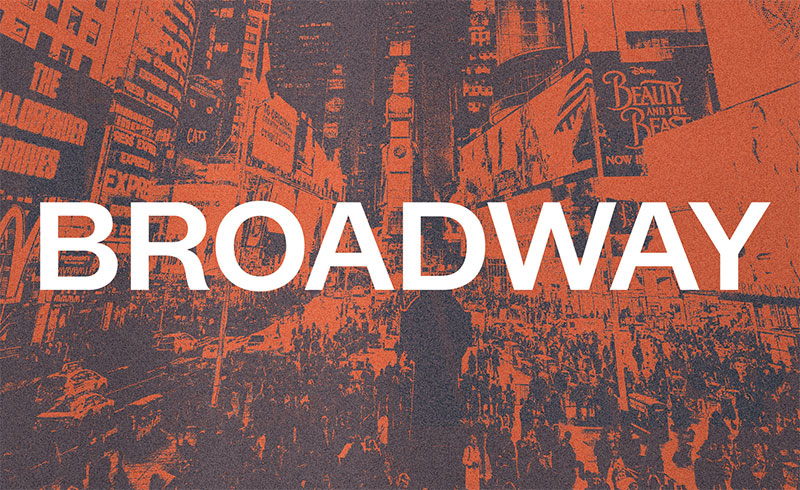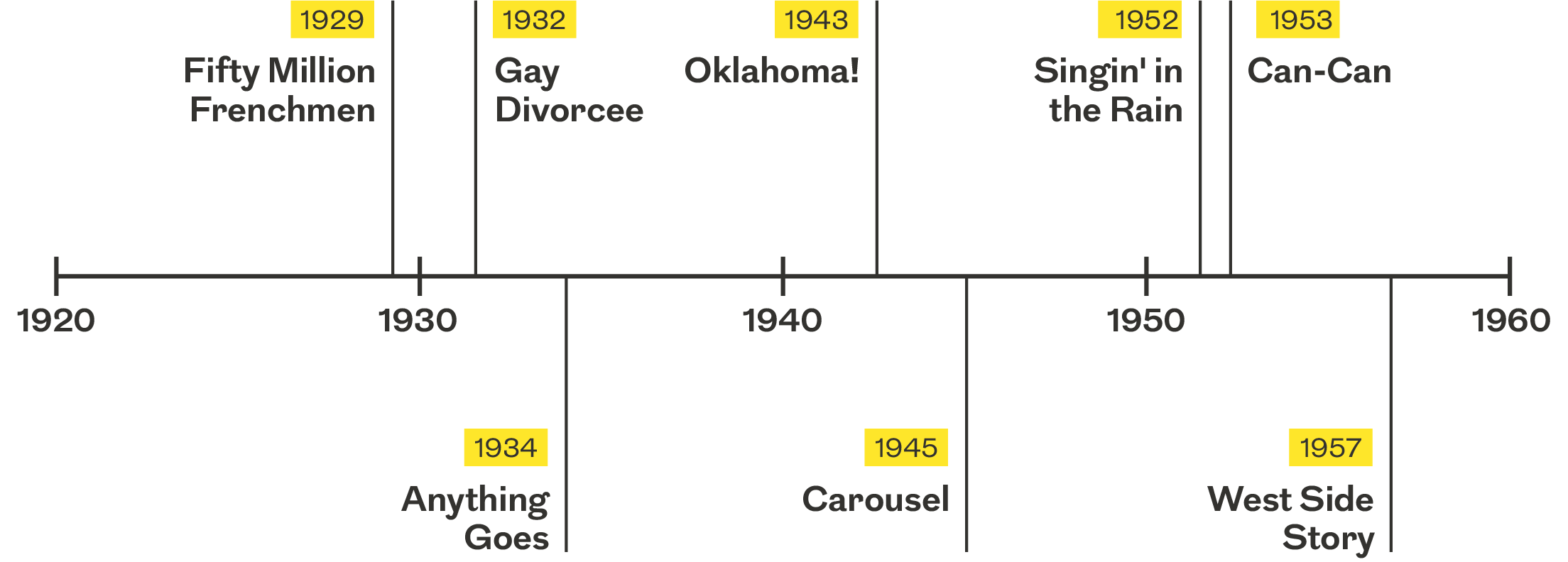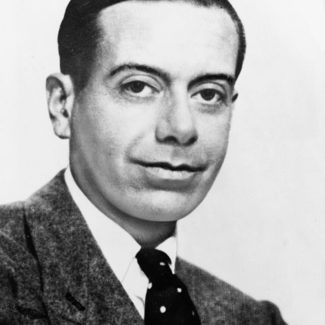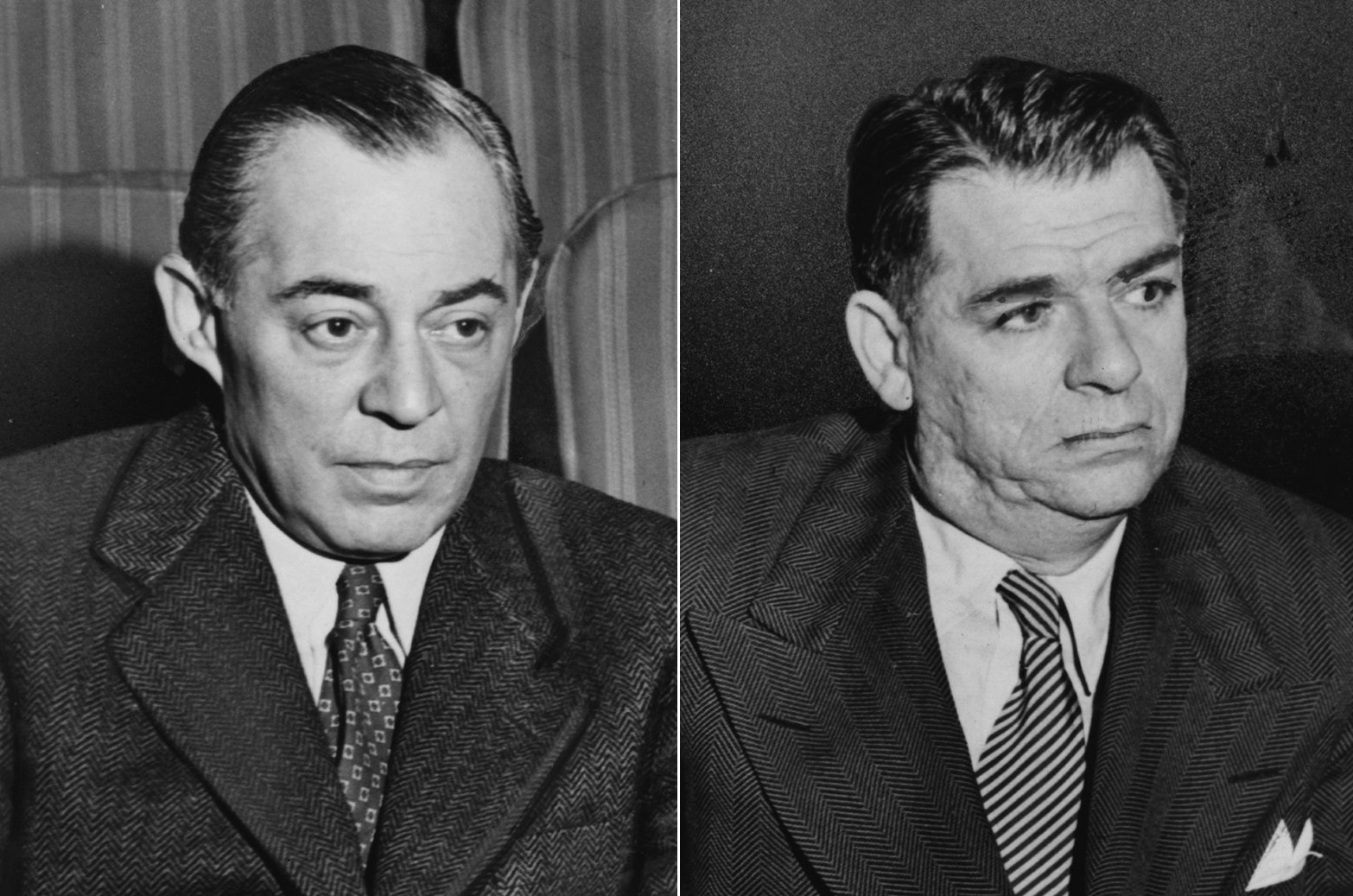
January 13, 2023
Broadway By the Decades, Part 1
This Spring, the Houston Symphony presents not one, not two, but three tributes to different epochs of Broadway’s illustrious 100+ year history of musicals. From the rag-tag jazz influences of Cole Porter to the epic rock-opera ballads on the frontlines of the French Revolution, concert-goers are in store for a well-rounded revue of Broadway’s evolution throughout the decades. Covering the first 40 years in this first of a two-part blog on each decade’s defining impact on the Broadway musical, read on to learn how musical favorites made their mark and get a sneak peek on what to listen for this February, March, and May during three Bank of America POPS Series performances.
Plus: For a limited time, receive a special discount when you bundle. Buy any two of these performances and receive 10% off your order or buy all three and get 25% off your total. Use code BROADWAY978 at check out through February 17. The more you buy, the more you save!
1920s
While entertainment in the form of staged shows involving song, dance, costumes, speech, and other elements that have come to define modern theatre have been around since the birth of civilization, the musical as we have come to know it today began its mainstream ascent during the early 1920s. Prior to this decade, operettas and vaudeville acts dominated the stages of the Great White Way (a nickname coined for the many theaters and their glistening new electric marquees that lined Broadway Avenue).
With the introduction of jazz as a major influence in the music scene and the happy-go-lucky gaiety that has come to define the 1920s, these acts swiftly took a backstage seat to a new type of show complete with sweeping dance numbers, captivating chorus girls, and collections of songs unrelated to a general, cohesive plot line.
With the premiere of the first Talkie—motion pictures complete with sound—in October 1927, it didn’t take long for musical adaptations of novels to take the stage and silver screen. It was also in 1928 that Cole Porter’s first successful musical comedy, Paris, premiered, catapulting him to a career that would span the first half of the Twentieth century.
What to listen for: Crooner Tony DeSare revives a number from Cole Porter’s 1929 comedy Fifty Million Frenchmen, March 17–19.
1930s
It was in this decade that Cole Porter’s legacy really cemented itself as he enchanted audiences with widely popular shows like Anything Goes, Gay Divorcee, and Jubilee. Unfortunately, the stock market crash and Great Depression began to affect people across the country, and Broadway was no exception. With discretionary spending at a standstill, the 1930–31 Broadway season saw a 20% reduction in production runs, and many stage performers traveled west to seek employment at the glittering new Hollywood movie studios that began to crop up in the deserts of California.
For those musicals that did survive the stages of New York, jazz continued to play an influential style in the repertoire, and a romance between a male and female lead began to crop up in many plots. Oftentimes shows would feature an A- and B-team couple, each with their own formulaic arch of needing to overcome some obstacle preventing them from living out their days in domestic bliss. Of course, happy endings were a must, so the musical would conclude with the couples embracing, followed by a grandiose dance number featuring the entire cast.
What to listen for: Cole Porter reigns supreme, so keep an ear out for hits from many of his most beloved shows.
1940s
It was here when musicals reached an all-time high in popular culture, and one could hear show tunes equally from the stage as well as on the radio. This decade also saw the rise of a new dynamic duo of composer Richard Rodgers and lyricist Oscar Hammerstein II. Dance numbers continued to play an essential role but became more integrated into the storyline of the show rather than in the revue-style that populated the preceding decades. While gushing romances gave way to farcical political commentary and themes of patriotism and war, they didn’t disappear completely. It was in 1943 that the groundbreaking show Oklahoma! opened as one of the first to integrate staging, music, full-scale ballet (choreographed by Agnes de Mille), drama, and comedy all together in a single show, with the chorus’s refrains utilized to advance the plot (sometimes from offstage). Oklahoma! was a smashing success, and this template was copied for the team’s next production, Carousel. This show was revolutionary in its own right by breaking the happy-ending trope and proving musicals could also present darker subject matters.
What to listen for: From the stages of Broadway itself, tenor Jeremy Jordan brings to life the lush melodies of Rodgers and Hammerstein February 24–26.
1950s
The success of the previous decade’s shows brought yet another transformation for the Broadway musical by demonstrating how lucrative a well-crafted production could be from a financial perspective. With audiences now demanding a cohesive narrative from beginning to end and producers seeing dollar signs, the number of musical adaptations from books and films skyrocketed by approximately 25% over the past thirty years as musicals became a well-earned industry on the theatre scene. No better example of concentrating across mediums than the 1952 release of MGM’s Singin’ in the Rain, the plot of which harkens back to the Talkie’s detriment to silent film stars who suddenly found themselves ill-equipped to face this advancement of entertainment technology—perhaps an ironic nod to Broadway-Esque musicals now being transported from the theater stage to a Hollywood studio.
What’s more, the Burlesque style of dance began to creep back into playhouses after disappearing around the turn of the century. While 1950s Burlesque was more paradoxical than the flirtatious style we know today, the nod to the old operetta was not lost on audiences and found new acclaim in 1957 when a soon-to-be titan of Broadway debuted West Side Story. Combining the musical genius of Leonard Bernstein and Stephen Sondheim, this show presented topical themes on immigration and cultural identity during Macarthur-era Americanism and featured performers who required training in classical techniques to meet the dynamic ranges and vocal demands mandated by the score.
It should also be noted that by the 1950s, Cole Porter was in ill health and facing the end of his life (he died of kidney failure in 1964). One of his final successful shows Can-Can, premiering in 1953, follows the lives of French showgirls roaming Burlesque dance halls of the 1890s (coincidentally when operettas were at their height). With his death and the debut of Sondheim now on the Broadway scene, it was time for a new generation of musicals to be born…

The Houston Symphony presents The Best of Broadway with Jeremy Jordan, Let’s Misbehave: The Songs of Cole Porter, and Broadway Goes Hollywood this Spring. Bundle two or three of these shows today to receive a special discount with code BROADWAY978. Continue learning about the history of Broadway in part 2 of this blog series covering the 1960s–2010s. —Mark Bailes











